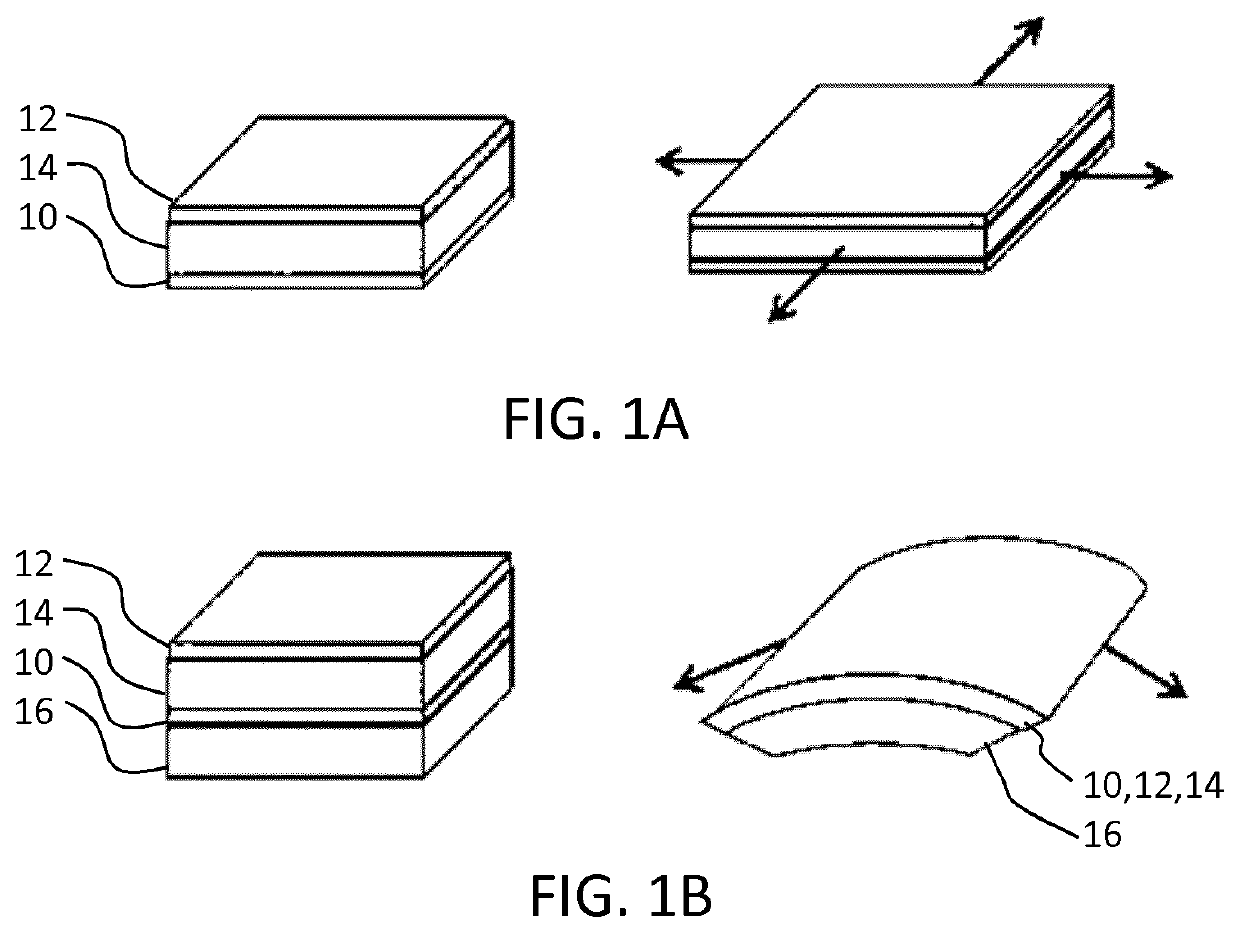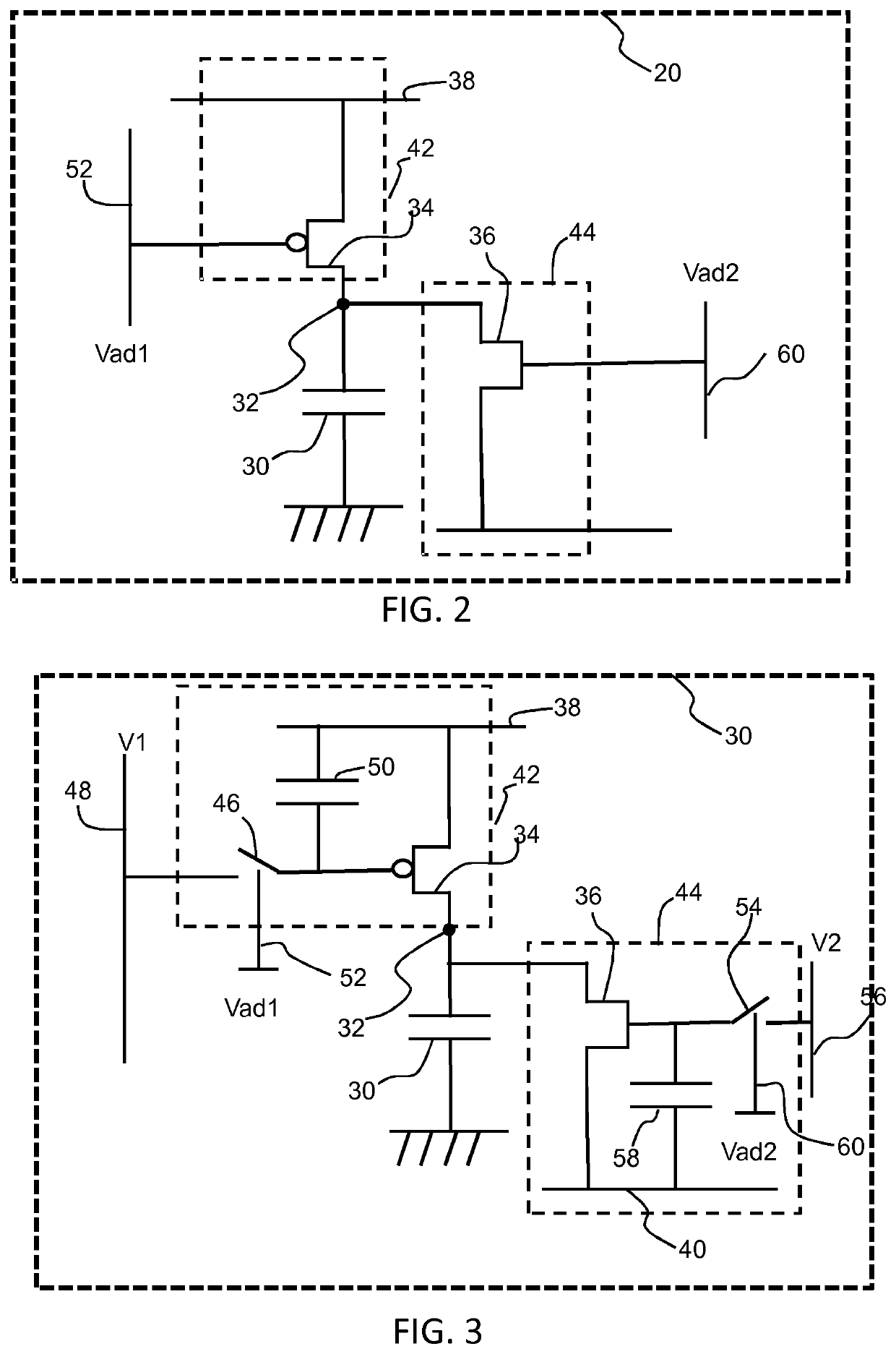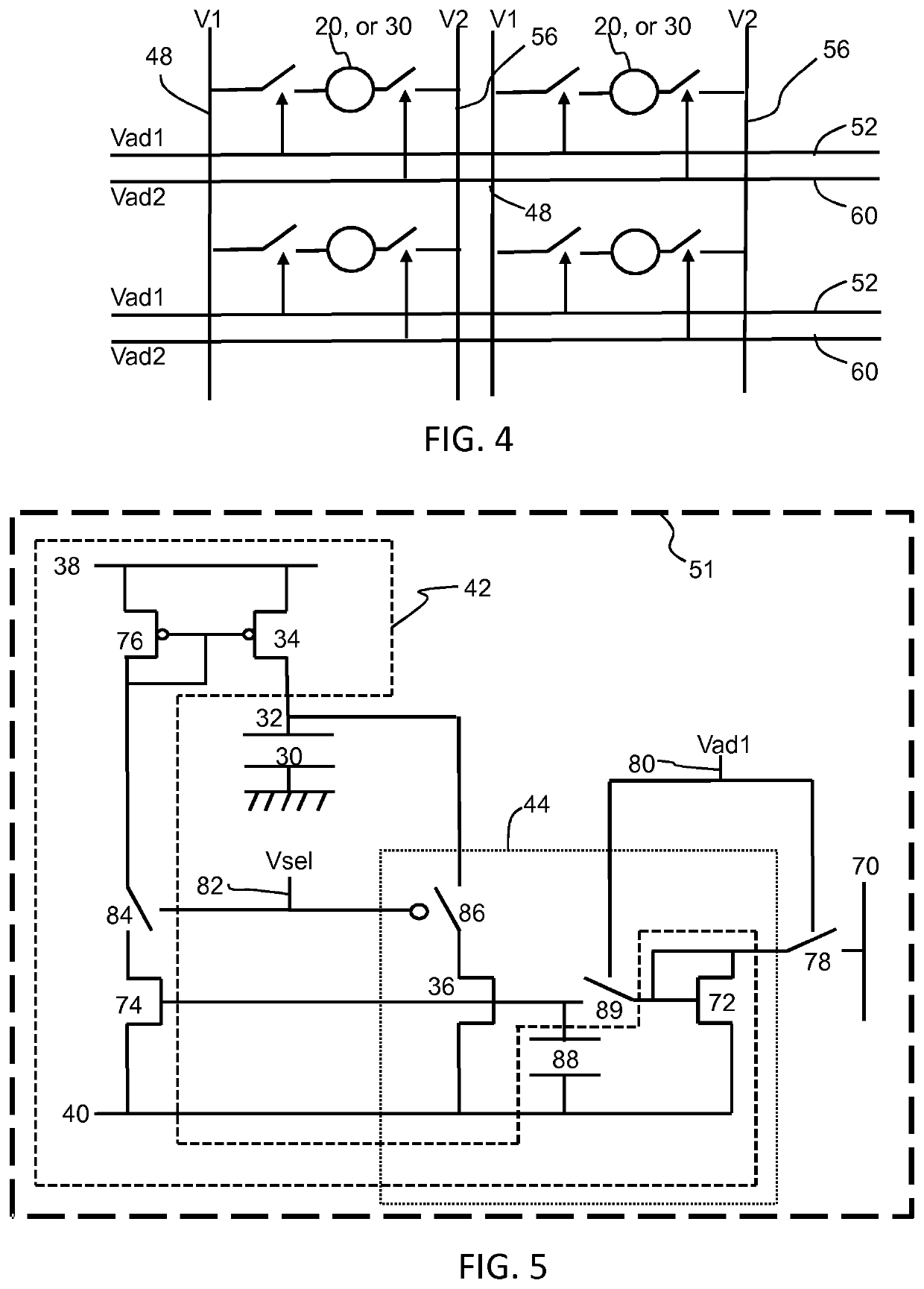Actuator device using current-addressed electroactive polymer
a current-addressed, electroactive polymer technology, applied in piezoelectric/electrostrictive devices, device details, device details, etc., can solve the problems of imperfect voltage driven devices, difficult individual actuation, and become expensive to drive each actuator individually. , to achieve the effect of improving the active matrix addressing
- Summary
- Abstract
- Description
- Claims
- Application Information
AI Technical Summary
Benefits of technology
Problems solved by technology
Method used
Image
Examples
Embodiment Construction
[0080]The invention provides a device with an actuator unit having an electroactive actuator and a drive unit for driving the electroactive actuator with current in two opposite directions to therewith allow or cause bidirectional actuation or bidirectional switching of actuator.
[0081]FIG. 2 shows a first example of an actuator unit 20 as part of a device according to one or more of the claims.
[0082]The actuation unit comprises an electroactive actuator 30 having at least two electrodes for driving the actuator. For example, the actuator may be of the type of FIG. 1A or 1B or, alternatively, of another type of electroactive actuator. One electrode of the actuator 30 is connected to an electrical reference, which in this case is a ground terminal, and the other electrode is connected to a node 32. The node is at the junction between a first transistor 34 and a second transistor 36 which transistors are in series with each other between a first powerline 38 and a second power line 40....
PUM
| Property | Measurement | Unit |
|---|---|---|
| current | aaaaa | aaaaa |
| voltage | aaaaa | aaaaa |
| electrically responsive | aaaaa | aaaaa |
Abstract
Description
Claims
Application Information
 Login to View More
Login to View More - R&D
- Intellectual Property
- Life Sciences
- Materials
- Tech Scout
- Unparalleled Data Quality
- Higher Quality Content
- 60% Fewer Hallucinations
Browse by: Latest US Patents, China's latest patents, Technical Efficacy Thesaurus, Application Domain, Technology Topic, Popular Technical Reports.
© 2025 PatSnap. All rights reserved.Legal|Privacy policy|Modern Slavery Act Transparency Statement|Sitemap|About US| Contact US: help@patsnap.com



